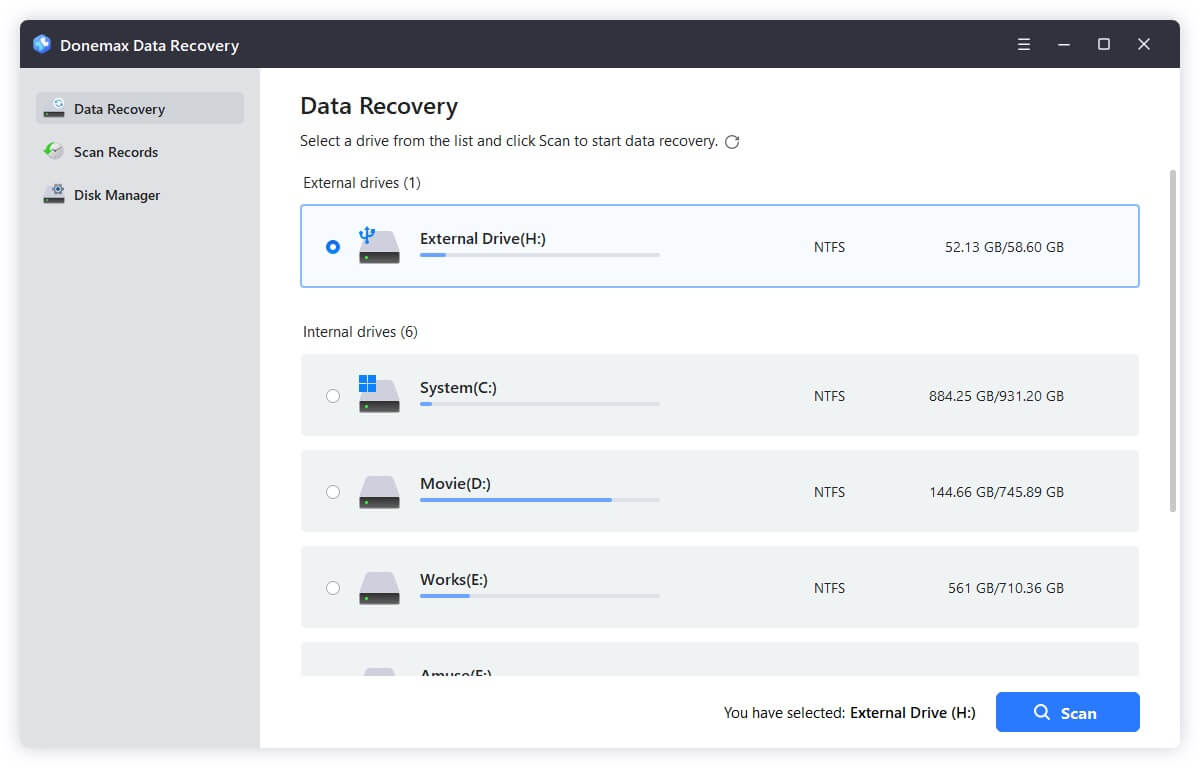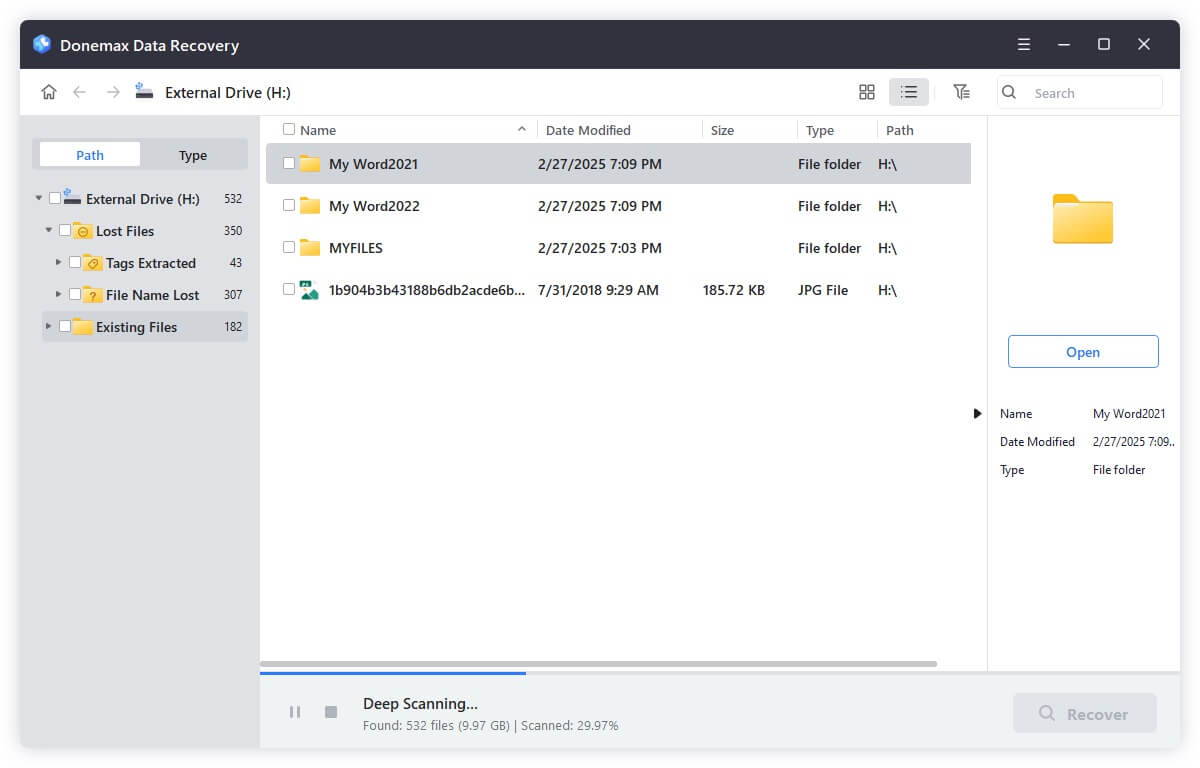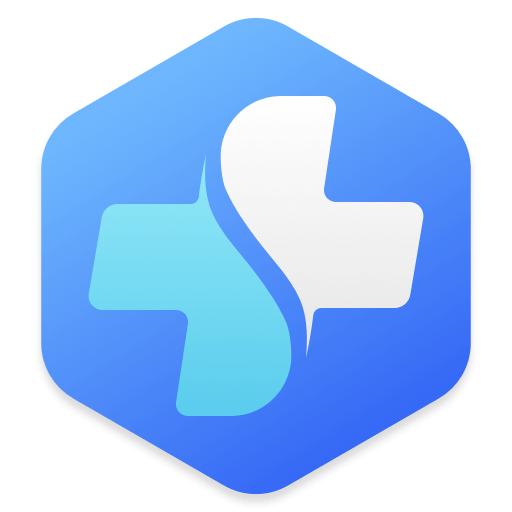Before we start: If an old hard drive is inaccessible or the files were missing somehow, you can use the effective tool Donemax Data Recovery to get files off the drive. The software can easily recover the deleted, formatted, or other lost files in any data loss situation.
PAGE CONTENT:
Hard drives often store valuable documents, photos, videos, and memories. But what happens when your old computer stops working, or you upgrade to a new system and still need access to your old data? Fortunately, retrieving files from an old hard drive is a common process—whether the drive is still functional or requires recovery efforts.

This comprehensive guide explains how to access and get files off an old hard drive safely and efficiently, whether it's an internal drive removed from a dead computer, an external hard drive, or a legacy storage device.
Types of Old Hard Drives
Before retrieving files, you must first identify what type of hard drive you're dealing with. Different drives require different connectors and tools for access.
1. Internal Hard Drives
Internal drives are installed inside desktop or laptop computers. The most common types include:
- SATA Hard Drives: Serial ATA (SATA) drives are the standard in most PCs and laptops from the mid-2000s onwards. They feature flat connectors for power and data cables.
- IDE/PATA Hard Drives: Older computers (pre-2005) may contain Parallel ATA (PATA), also known as IDE drives, with large, ribbon-style connectors.
2. External Hard Drives
External hard drives come preassembled in enclosures and connect via USB or other ports:
- Portable External Drives: Small, USB-powered drives often used for backups and extra storage.
- Desktop External Drives: Larger drives requiring a separate power adapter in addition to a USB connection.
3. SSDs and Other Storage Media
Some old computers use Solid-State Drives (SSDs), which may include:
- 2.5-inch SATA SSDs: Same form factor as laptop hard drives, but faster and more reliable.
- NVMe or mSATA SSDs: Found in some ultrabooks or newer systems; require specific adapters for access.
Tools Needed to Access an Old Hard Drive
Accessing files from an old hard drive requires basic tools to connect it to a working computer:
1. Hard Drive Enclosure
A hard drive enclosure converts an internal drive into an external one, complete with USB connectors:
- Ensure the enclosure matches your drive type (2.5" or 3.5", SATA or IDE).
- Install the old drive into the enclosure and connect it to your new computer via USB.
2. USB to SATA/IDE Adapter
A USB to SATA or IDE adapter is a quick solution for temporary access without installing the drive into a computer or enclosure:
- Plug the drive into the adapter, connect to your computer via USB.
- Suitable for both 2.5-inch and 3.5-inch drives with proper power supply.
3. Docking Stations
Docking stations support multiple drive sizes and formats, offering plug-and-play convenience:
- Ideal for users needing to access multiple old drives regularly.
- Look for models supporting both SATA and IDE interfaces for broader compatibility.
Step-by-Step: How to Get Files off an Old Hard Drive
Once you've identified your drive and gathered the necessary tools, follow these steps:
1. Remove the Hard Drive (for Internal Drives)
If the hard drive is still inside a computer that no longer works:
- Power off the computer completely and unplug it.
- Open the case or access panel.
- Disconnect the data and power cables from the drive.
- Unscrew or unclip the drive carefully.
- Handle the drive by its edges to avoid static damage.
2. Connect the Hard Drive to Another Computer
Using the correct tool:
- Place the drive inside a compatible enclosure or connect it with a USB adapter.
- If it's a desktop-sized 3.5-inch drive, ensure external power is supplied.
- Connect the USB end to your working computer.
3. Access the Drive
- On Windows, open File Explorer, and the drive should appear under "This PC."
- On Mac, it should show on the desktop or in Finder.
- If prompted, allow the computer to install drivers (this happens automatically in most modern systems).
4. Transfer Your Files
- Browse the drive to locate the files or folders you want to keep.
- Copy them to your new computer's internal storage or an external backup drive.
- For large file transfers, ensure stable connections and avoid interruptions.
Special Scenarios
Certain situations require extra steps when accessing old drives:
1. Accessing Drives from Non-Working PCs
Even if the old computer is dead, the hard drive itself may still function:
- Remove the hard drive as outlined earlier.
- Connect it externally using an enclosure, adapter, or docking station.
- Retrieve files as long as the drive isn't physically damaged.
2. Accessing Mac Drives on Windows or Vice Versa
Mac and Windows use different file systems, leading to compatibility issues:
- Mac to Windows:
- Drives formatted as HFS+ or APFS won't be natively readable on Windows.
- Use tools like HFSExplorer, Paragon HFS+, or MacDrive to access files.
- Windows to Mac:
- NTFS drives are readable but not writable by default on Mac.
- Use Donemax NTFS for Mac or Mounty to enable full access.
3. Accessing Drives with Password Protection or Encryption
If the drive uses encryption like BitLocker (Windows) or FileVault (Mac):
- You'll need the original password or recovery key to unlock the drive.
- Without credentials, encrypted drives are nearly impossible to access.
- Some professional data recovery services offer decryption, but success isn't guaranteed.
What If the Old Hard Drive Doesn't Work?
Not all old hard drives function perfectly after years of storage or heavy use. Drives are mechanical or electronic components prone to failures, especially when exposed to physical damage, electrical issues, or age-related wear. If your old hard drive doesn't show up or behaves abnormally, don't panic. Below is a detailed breakdown of how to troubleshoot and recover data from non-working hard drives.
1. Basic Troubleshooting
- Double-check all connections (USB, power, data cables).
- Try different USB ports or computers.
- Listen for unusual noises like clicking, grinding, or no spinning—signs of hardware failure.
2. Using Data Recovery Software
If the drive is recognized but inaccessible or showing errors, you can try to recover the files from the old hard drive with a reliable data recovery software.
First, download and install reputable recovery software such as Donemax Data Recovery. The software can deeply scan and analyze the corrupted file system to recover the files off the old hard drive.
Donemax Data Recovery
- Most reliable data recovery software for Windows and macOS.
- Data recovery for inaccessible/corrupted hard drive.
- Recover deleted/lost documents, pictures, videos, and more.
Then Follow software instructions to scan the old drive and attempt file recovery. Here is a simple tutorial for the data recovery process:
Step 1. Run the software Donemax Data Recovery and select the old hard drive from the device list.

Step 2. Start a scan to search for the missing or inaccessible data from the old hard drive.

Step 3. Check and preview the found files. Select the wanted files and ensure to save recovered files to a different location (not the faulty drive).

3. Professional Data Recovery Services
For physically damaged or severely corrupted drives:
- Seek help from certified recovery labs like DriveSavers, Ontrack, or Seagate Recovery Services.
- Services can recover data from drives with mechanical issues, water damage, or logic board failures.
- Costs vary based on damage severity and recovery complexity—be prepared for potentially high fees.
4. Mechanical Failures – Understanding the Risks
Mechanical failures involve damage to moving parts inside a traditional hard drive (HDD):
- Read/Write Head Failure: The arm that reads or writes data may be stuck or broken, causing clicking noises.
- Spindle Motor Failure: Prevents the platters from spinning, making data inaccessible.
- Platter Damage: Scratches or contamination on the platters can permanently destroy data sectors.
Mechanical repairs require a certified cleanroom environment to prevent contamination. DIY repairs risk complete data loss and void recovery chances.
When the Drive Doesn't Work, Act Carefully
Accessing files from an old hard drive can become challenging if the drive doesn't function as expected. The key is to follow systematic steps:
- Perform basic troubleshooting to rule out simple connection issues.
- If the drive is detected but inaccessible, use reliable data recovery software.
- For signs of physical damage, consult professionals immediately.
- Understand that continued DIY attempts on a failing drive can worsen the damage.
With patience and the right approach, even problematic old hard drives can often yield their valuable data—either through personal recovery efforts or expert assistance.
Tips for Safeguarding Data Long-Term
Once you've retrieved files from an old hard drive, protect your data going forward:
1. Backing Up Important Files
- Regularly back up data to external hard drives, SSDs, or reliable cloud services (Google Drive, Dropbox, OneDrive).
- Consider automated backup solutions for ongoing protection.
2. Safely Storing Old Hard Drives
- Keep old drives in anti-static bags or padded containers.
- Store them in cool, dry environments away from direct sunlight or moisture.
- Periodically connect and test old drives to ensure they still function.
3. Properly Disposing of or Repurposing Old Drives
When no longer needed:
- Use secure data-wiping software like DBAN or Eraser to permanently erase files.
- Physically destroy drives for maximum security (shredding, drilling).
- Repurpose functioning old drives as external storage or backups.
Conclusion
Accessing and retrieving files from an old hard drive is entirely possible with the right tools and approach. Whether salvaging cherished family photos from a broken PC or transferring work documents to a new laptop, this process can help preserve valuable data.
Key takeaways:
- Identify the type of old hard drive (SATA, IDE, SSD).
- Use appropriate tools like enclosures, adapters, or docking stations.
- Safely transfer files to your new system.
- Employ recovery software or professional services if the drive is damaged.
- Always back up important data to prevent future loss.
By following these steps, you can successfully access and get files off an old hard drive, ensuring your data stays secure, accessible, and preserved for years to come.


Donemax Data Recovery
Powerful, safe & easy-to-use data recovery software. Easily and completely recover deleted, formatted, or other lost data. The tool supports PC, Mac, HDD, SSD, USB drive, camera, SD card, RAID and other storage devices.
Related Articles
- Jul 27, 2025Best 8 Fixes for USB Drive Not Detected on Mac
- May 22, 2025How to Initialize SSD on Windows 11/10: Step-by-Step Guide
- Jan 01, 1970How to Completely Uninstall Photoshop on Windows or macOS?
- Mar 19, 2025How to Use Seagate Game Drive PS5 SSD?
- Apr 25, 2025Format a BitLocker Encrypted USB Drive
- Apr 16, 2025How to Remove BitLocker Password of My USB Drive: A Step-by-Step Guide

Steven
Steven has been a senior writer & editor of Donemax software since 2020. He's a super nerd and can't imagine the life without a computer. Over 6 years of experience of writing technical solutions and software tesing, he is passionate about providing solutions and tips for Windows and Mac users.

Gerhard Chou
In order to effectively solve the problems for our customers, every article and troubleshooting solution published on our website has been strictly tested and practiced. Our editors love researching and using computers and testing software, and are willing to help computer users with their problems
